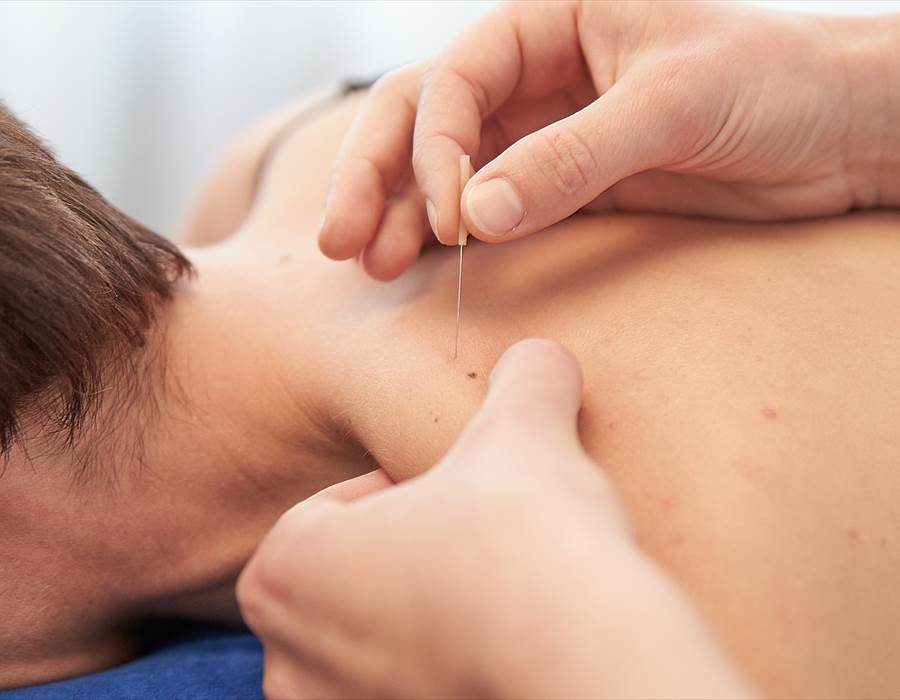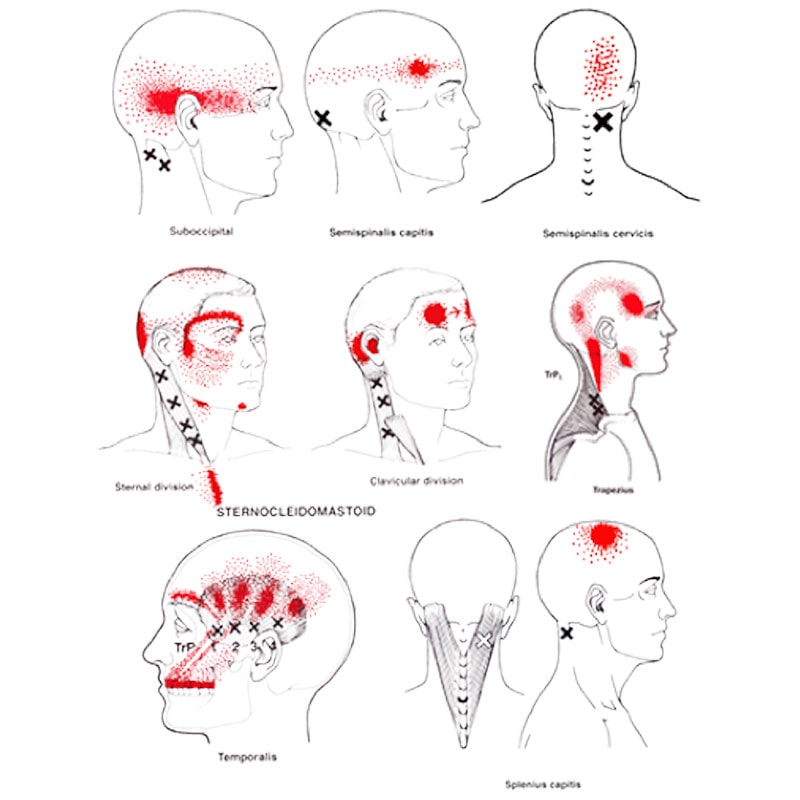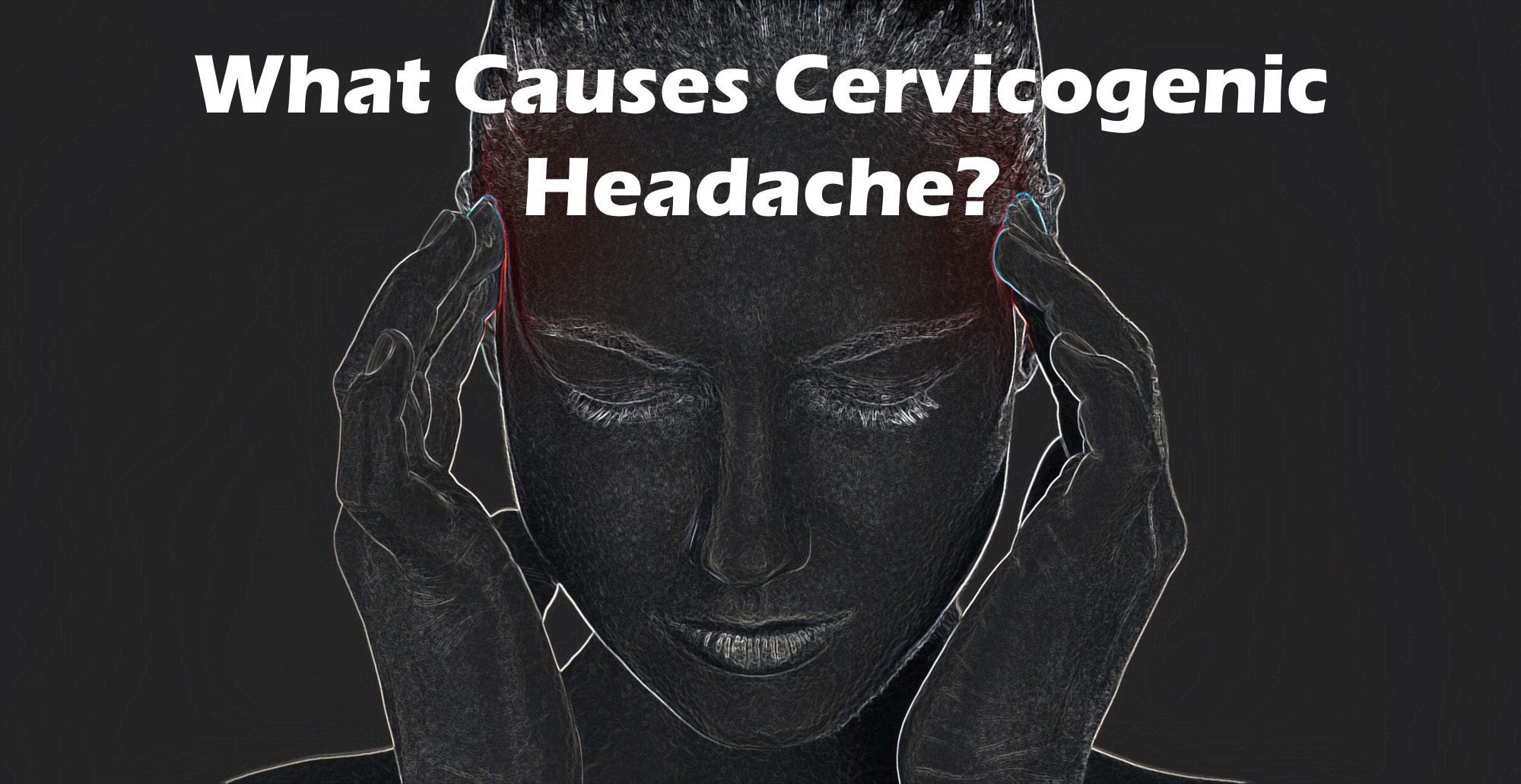Cervicogenic headaches are a common cause of headaches and frequently seen in the physical therapy profession. These type of headaches can be very painful, and even debilitating. However they differ from a true migraine.
 Cervicogenic headaches often have a musculoskeletal component associated with them, and that is a physical therapists specialty. People with cervicogenic headaches often have loss of range of motion in certain directions as a result of tight musculature or stiff cervical spine joints and poor posture. The muscles can often be palpated in certain spots which can increase their symptoms and refer pain into the head, these spots are commonly referred to as “knots” or “trigger points”. The headaches are also often unilateral, on one side only, and the pain may radiate from the neck/back of the head up to the front of the head or behind the eye. There may or may not be neck pain accompanying them.
Cervicogenic headaches often have a musculoskeletal component associated with them, and that is a physical therapists specialty. People with cervicogenic headaches often have loss of range of motion in certain directions as a result of tight musculature or stiff cervical spine joints and poor posture. The muscles can often be palpated in certain spots which can increase their symptoms and refer pain into the head, these spots are commonly referred to as “knots” or “trigger points”. The headaches are also often unilateral, on one side only, and the pain may radiate from the neck/back of the head up to the front of the head or behind the eye. There may or may not be neck pain accompanying them.
There are many different treatments that physical therapists can offer to help treat cervicogenic headaches. These may include:
- Modalities such as moist heat and electrical stimulation
- Manual soft-tissue massage
- Joint mobilizations
- Therapeutic exercises / postural correction
 One particular manual therapy technique that I personally have found to be a beneficial treatment for my patients with cervicogenic headaches is dry needling. Dry needling is safe, minimally discomforting and often an effective technique for patients with certain musculoskeletal presentations. This is a treatment performed by skilled, trained physical therapists, certified in the procedure.
One particular manual therapy technique that I personally have found to be a beneficial treatment for my patients with cervicogenic headaches is dry needling. Dry needling is safe, minimally discomforting and often an effective technique for patients with certain musculoskeletal presentations. This is a treatment performed by skilled, trained physical therapists, certified in the procedure.
A thin monofilament needle, similar to an acupuncture needle (although the treatment is very different than acupuncture) penetrates the skin and treats underlying muscular trigger points. The release of the muscles may be performed at the neck, base of the skull, and upper back that may be contributing to cervicogenic headaches.
A trigger point is a local contracture or tight band in a muscle fiber that can disrupt function, restrict range of motion, refer pain or cause local tenderness. When dry needling is applied to a dysfunctional muscle or trigger point, it can decrease banding or tightness, increase blood flow, and reduce local and referred pain that may be associated with cervicogenic headaches.

Dry needling is not only an effective treatment for cervicogenic headaches but for a wide array of various musculoskeletal disorders. Using this technique for rotator cuff dysfunction, calf tightness, and even tremors or spasticity can be effective!
If you are a person who believes they may be experiencing cervicogenic headaches, the various treatments offered by a physical therapist, including dry needling, may be for you. If you have any questions regarding your symptoms, or dry needling, please do not hesitate to reach out to myself or one of the many other knowledgeable physical therapists at our offices in Woodbridge, Hamden, and Branford.
 Peter Geloso, DPT has been a licensed physical therapist in the state of Connecticut for over 10 years and has been working at Amity Physical therapy for over eight years in their Woodbridge location. He received both his Bachelor’s Degree in Exercise Sports Science and his Doctorate Degree in Physical Therapy from Elon University in North Carolina. He can be reached by phone with any questions at (203) 389-4593. Please feel free to explore our website www.amitypt.com. Remember, you don’t need a referral for Physical Therapy! Learn more about Direct Access by CLICKING HERE.
Peter Geloso, DPT has been a licensed physical therapist in the state of Connecticut for over 10 years and has been working at Amity Physical therapy for over eight years in their Woodbridge location. He received both his Bachelor’s Degree in Exercise Sports Science and his Doctorate Degree in Physical Therapy from Elon University in North Carolina. He can be reached by phone with any questions at (203) 389-4593. Please feel free to explore our website www.amitypt.com. Remember, you don’t need a referral for Physical Therapy! Learn more about Direct Access by CLICKING HERE.
Schedule you appointment today
Tags:
- Amity PT
- Cervicogenic Headache
- Fitness
- Headaches
- Health
- Migraine
- Neurology
- Orthopedics
- Pain
- physical therapy
- PT
- Wellness


